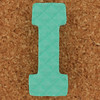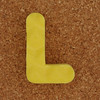After exploring
this site on Web 2.0 tools, I fell in love with the
Prezi presentation tool and have nearly vowed to never show a power point again. For instance: below is a Prezi that one teacher used to engage a class on the first day:
I once read a book explaining how the first day of school is the most important day out of the whole year for a teacher, as it sets the protocol, procedures, and expectations for every class following. If a student were to see this presentation on the first day of class, then the bar would be set and they could expect for the rest of the year the material and content to be presented in an interesting and new fashion, rather than death by power point and overhead notes. It is one more way of roping students in and grabbing their attention from the start and waking them up to an entire course of information they are about to learn.
In this article
Web 2.0 is the Future of Education, Trend #3 discusses how electronic books will "Rock our reading world." However, I disagree with this statement. Yes, Kindles are a great tool and many prefer it over physical books. I for one, do not. There is just something shy of magical of walking into a public library and being surrounded by a wealth of information and books, both physically and visually. Being able to take a physical text book, annotate it, read it, and by the end of the course have it indisputably yours in that it no longer looks like its original self, but a work of your own- with notes in the columns, dog eared pages, and highlighted text. Yes, you can do these things virtually on a kindle, but being able to pull it off a bookshelf and look at your self-made tabs, and know exactly where to turn not because the page you're looking for is labeled, but because you've referenced it so many times that the book opens there naturally, is something the world of e-books lacks, and I do not believe will every be able to effectively emulate.
To me, School 2.0 defines a non-linear path to education. It is a participant driven and interactive experience involving students using computers and the internet as a pathway to learning. In the coming years, schools will be culturally forced to participate in this new "tidal wave" of information and education system. Accepting technology in the classroom and using it as a mode of instruction will be necessary.


















